Top 9 Interesting Facts about Buzz Aldrin
Buzz Aldrin is best known as the second man to walk on the moon, but the West Point graduate, Air Force pilot, and MIT-trained engineer has had an incredible ... read more...life beyond the Apollo 11 mission. He also is an American former astronaut, engineer and fighter pilot. He made three spacewalks as pilot of the 1966 Gemini 12 mission, and, as Lunar Module Eagle pilot on the 1969 Apollo 11 mission, he and mission commander Neil Armstrong were the first two people to land on the Moon. Here are 9 fascinating facts about this quotable explorer.
-
On January 20, 1930, Edwin Eugene Aldrin was born in Montclair, New Jersey. His mother Marion's maiden name was Moon, and his father Edwin Eugene Aldrin, Sr. was a veteran Army pilot who saw action in both World Wars. He flew F-86 Saber Jets in the Air Force's 51st Fighter Wing before beginning his illustrious career with NASA, accomplishing 66 combat flights in Korea. In a single month, his unit downed 61 enemy aircraft and forced 57 more to land. Having personally shot down two opposing fighters, Aldrin was awarded the Distinguished Flying Cross for his bravery.
Following the war, he earned a doctorate in aeronautics from MIT and was chosen for NASA Astronaut Group 3, which also included his Apollo 11 teammate, command module pilot Michael Collins. Aldrin shot down two MIGs in combat in the Korean War, and he earned two Air Force Service Medals, two Distinguished Flying Crosses and three Air Medals during his career. As An astronaut he risked his life time after time on beyond cutting edge technology. Post his NASA career he had a problem with depression and alcoholism and quit drinking for good in 1978.
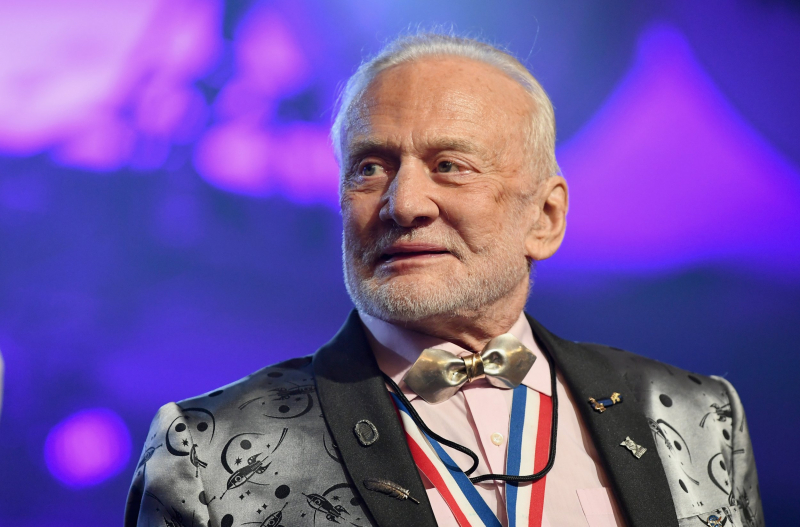
Source: Newsweek>Aristos Georgiou 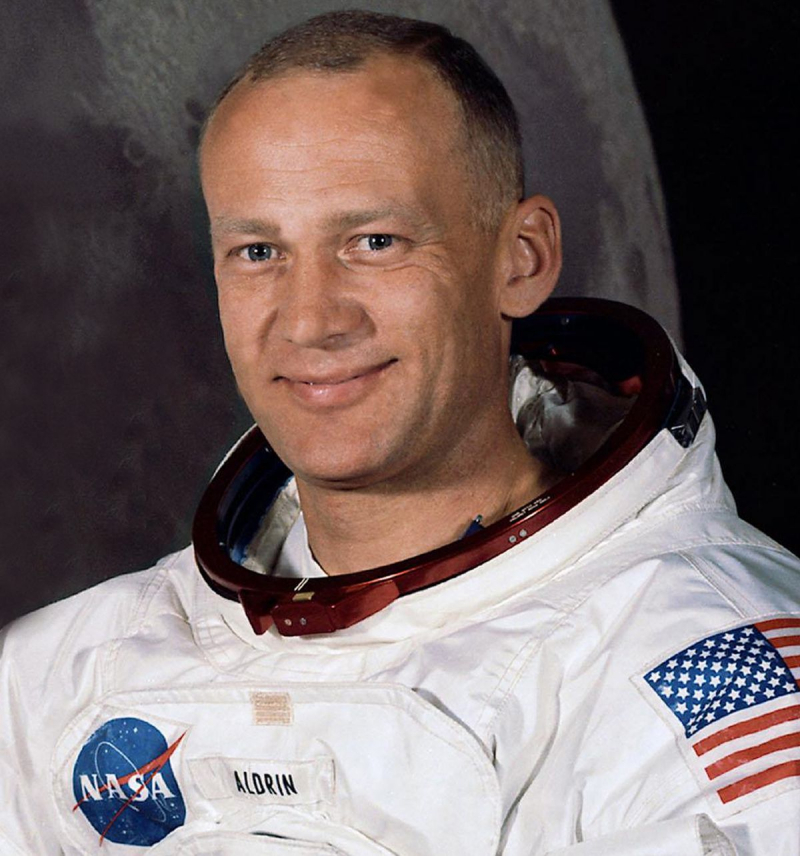
Source: Shropshire Star -
On July 19, 1969, the Apollo 11 lunar lander made contact with the moon's Sea of Tranquility, but Aldrin and Neil Armstrong were unable to exit the ship until several hours later. Aldrin took the opportunity to partake in self-communion. Aldrin had been granted permission to send bread and wine into space because he served as an elder at the Webster Presbyterian Church in Texas. Later, he noted that because the moon's gravitational attraction is only one-sixth that of Earth's, the wine "curled softly and beautifully up the side of the cup." He urged people to reflect on the occasion through mission control, but he later acknowledged that he ought to have sought for a more inclusive celebration.
“We had come to the moon in the name of all mankind—be they Christians, Jews, Muslims, animists, agnostics, or atheists,” Aldrin wrote in his book Magnificent Desolation: The Long Journey Home From the Moon. “But at the time I could think of no better way to acknowledge the enormity of the Apollo 11 experience than by giving thanks to God.” By the time he got back to Earth, more practical matters were on Aldrin's mind: He had to send an expense report (for $33.31) to NASA for the moon trip.
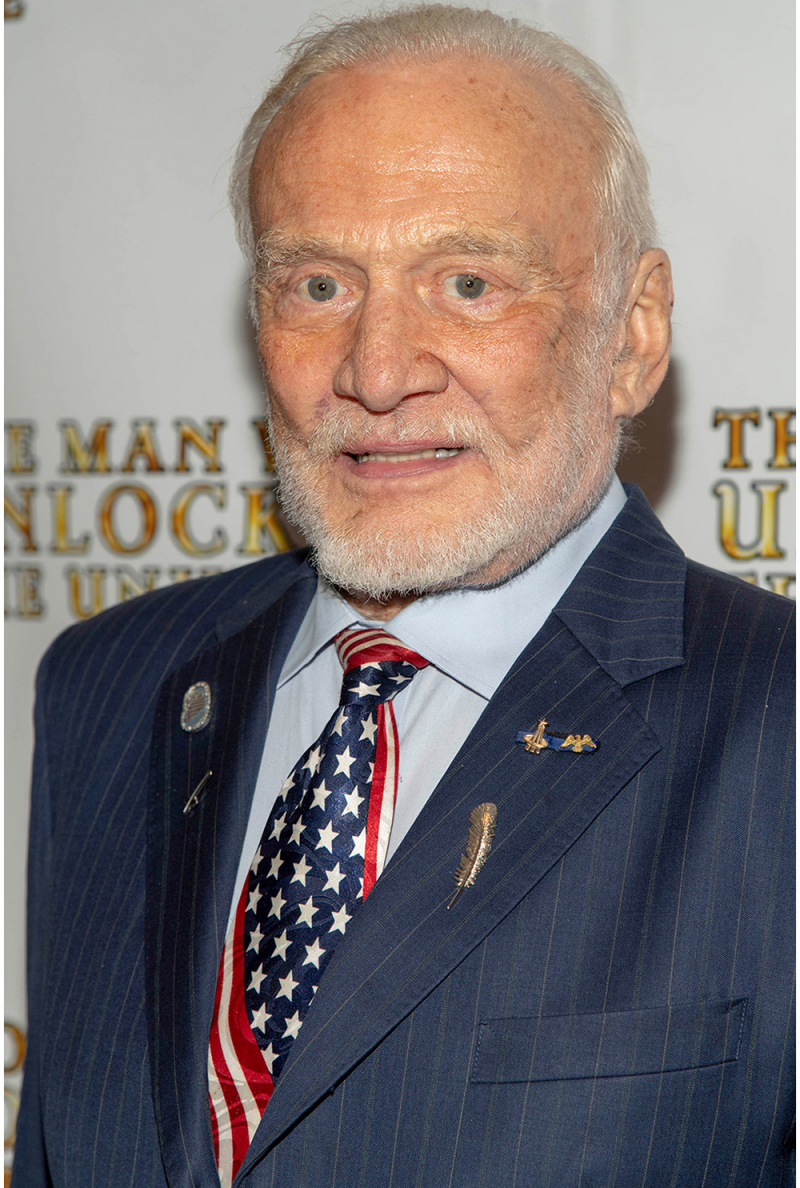
Source: thejewishvoice.com 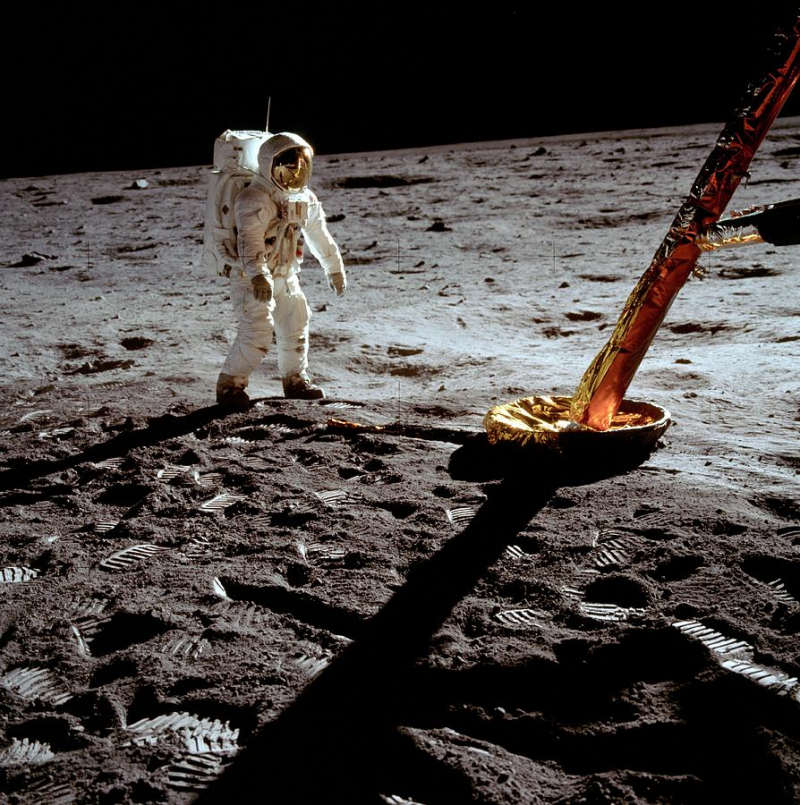
Source: Fine Art America -
19 minutes after Armstrong, Aldrin stepped out of the Eagle lunar module, and they spent the next two hours collecting rock samples, taking pictures, and setting up experiments. They consumed the first lunch ever consumed by humans on the moon while they were working, which Rita Rapp, a NASA food scientist, had meticulously prepared. The list of items, though, still reads like a menu from a college dorm: square-shaped bacon, sugar cookie cubes, fruit drink, and coffee.
“It’s not exactly a grand feast for a couple of guys on the verge of making history,” Aldrin tweeted in December 2021, “but when you’re in space you have to make do with what you have.” The first person to go to space and the first person to eat there was Russian astronaut Yuri Alekseyevich Gagarin. His meals were far less exciting than his mission as he had to eat pureed beef, liver and vegetables from a tube as he orbited Earth. He squeezed chocolate sauce from a different tube for dessert.
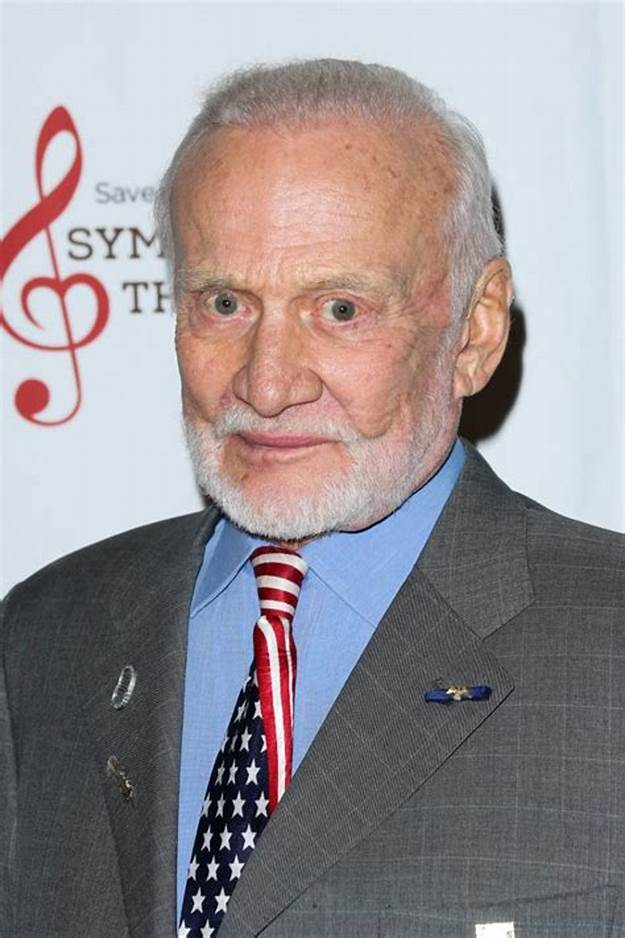
Source: OK! Magazine UK 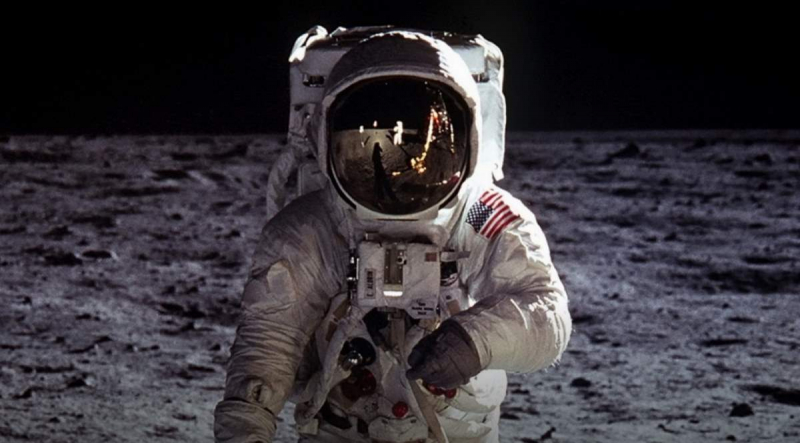
Source: ourplnt.com -
For the eight-day mission of Apollo 11, Aldrin, Armstrong, and Collins brought two medical kits with hundreds of pills—this was the 1960s, after all. They contained a total of 72 aspirin, 60 antibiotics, 12 antiemetic drugs, 12 stimulants, 18 painkillers, 60 decongestants, 24 space diarrhea drugs, and 60 antibiotics. The astronauts were equipped with first aid cream, eye drops, nasal sprays, bandages, and thermometers in case anything went wrong on the moon. According to the International Association of Antarctica Tour Operators, Aldrin's health had been declining when he was touring the South Pole with a private party.
According to the report, he was transported there as a precaution on the first aircraft out to McMurdo Station, a US research facility on the Antarctic coast. His status was reported as stable, and it was stated that his family was aware of the situation. Aldrin was transported to McMurdo on an LC-130 cargo plane outfitted with skis, according to the National Science Foundation, which oversees the American Antarctic program. He was then transported to Christchurch, New Zealand, where he was then taken to a local hospital for treatment, according to the foundation.
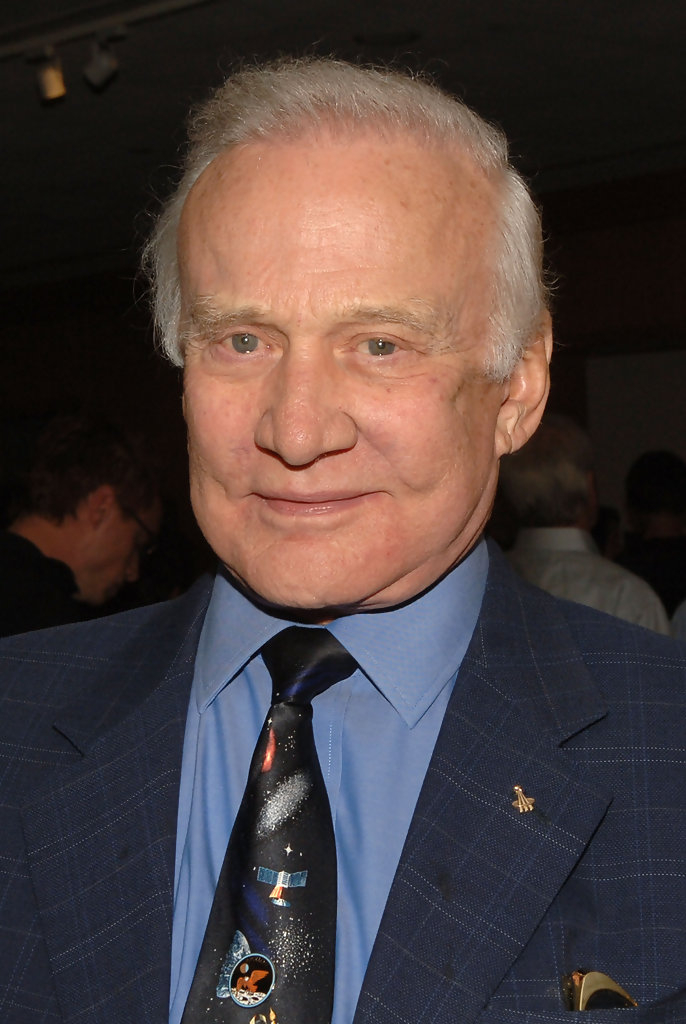
Source: StyleBistro 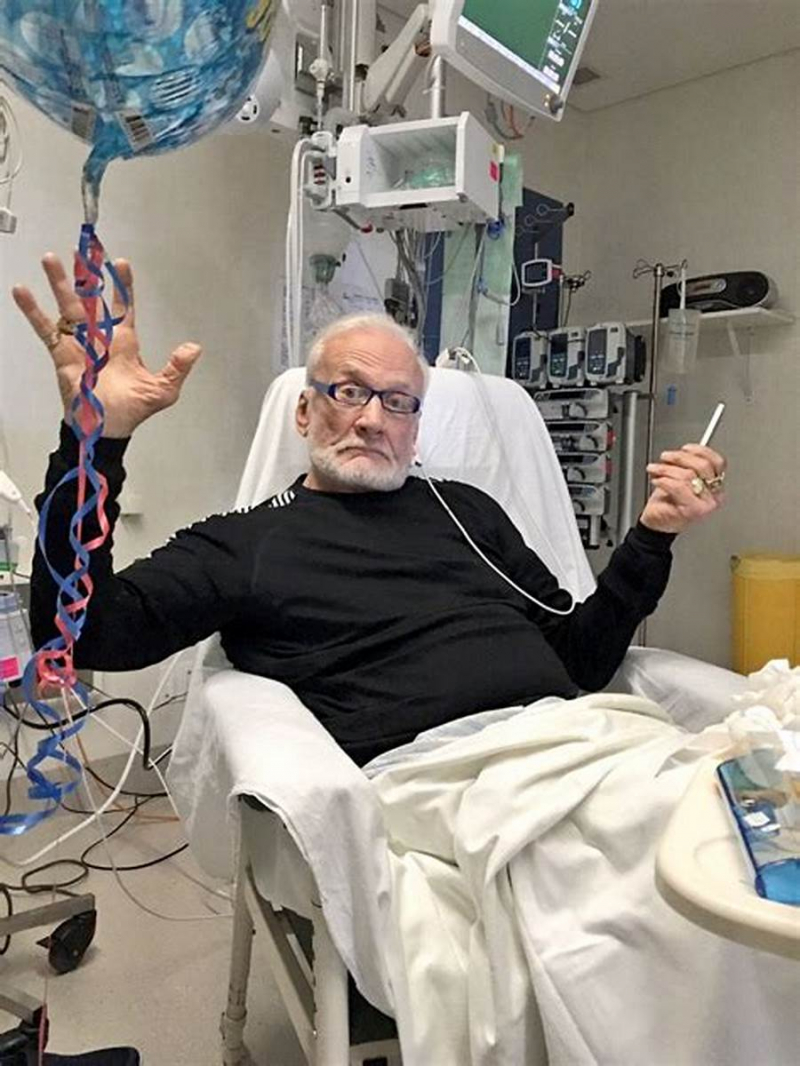
Source: collectSPACE -
His specialized study of rendezvous helped to earn him entry into the space program shortly after graduation. In 1963, Aldrin was part of a third group of men selected by NASA to attempt to pioneer space flight. Aldrin was put in charge of creating docking and rendezvous techniques for spacecraft. He also pioneered underwater training techniques, to simulate flight in zero gravity. In 1966, Aldrin and astronaut Jim Lovell were assigned to the Gemini 12 crew. During their November 11 to November 15, 1966, space flight, Aldrin made a five-hour spacewalk the longest and most successful spacewalk ever done up to that time. He also used his rendezvous abilities to manually recalculate all the docking maneuvers on the flight, after the on-board radar failed.
Nearly eight hours of Aldrin's 289 hours and 53 minutes in space were spent outside of a spaceship. When he spent 5.5 hours outside the Gemini 12 spacecraft during its 1966 mission, he set a record for space walks. Aldrin and Armstrong were outside the lunar module for two hours and 31 minutes during the Apollo 11 moon landing. Aldrin has periodically come under fire from conspiracy theorists who believe the moon landing was a fake because of his accomplishments. A moon landing sceptic wanted to file charges after Aldrin attacked him in 2002, but a judge determined that Aldrin had been provoked.
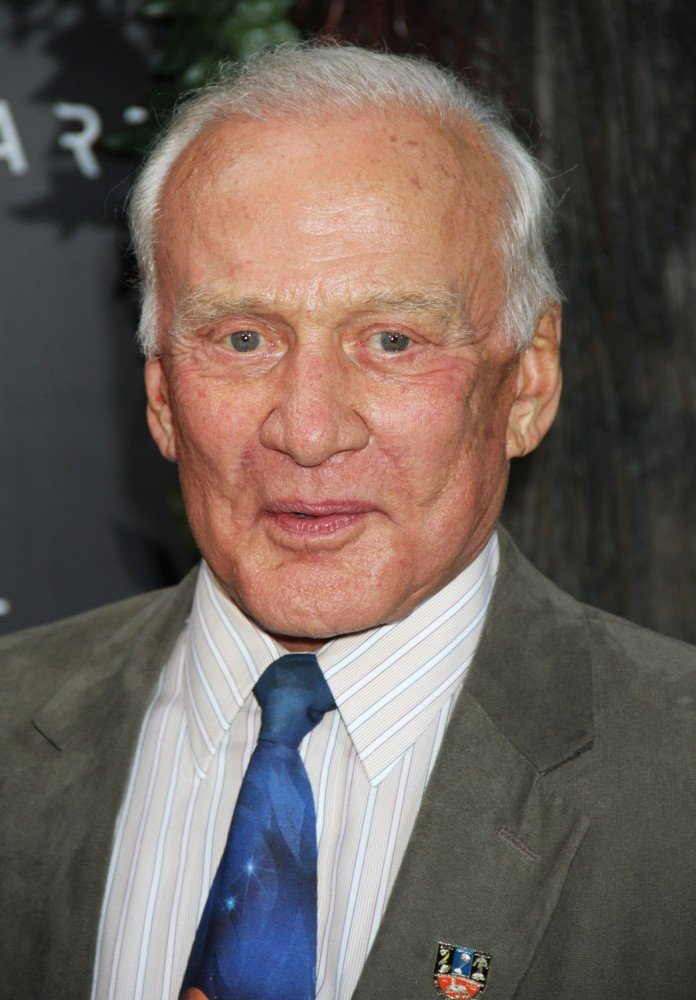
Source: aceshowbiz.com 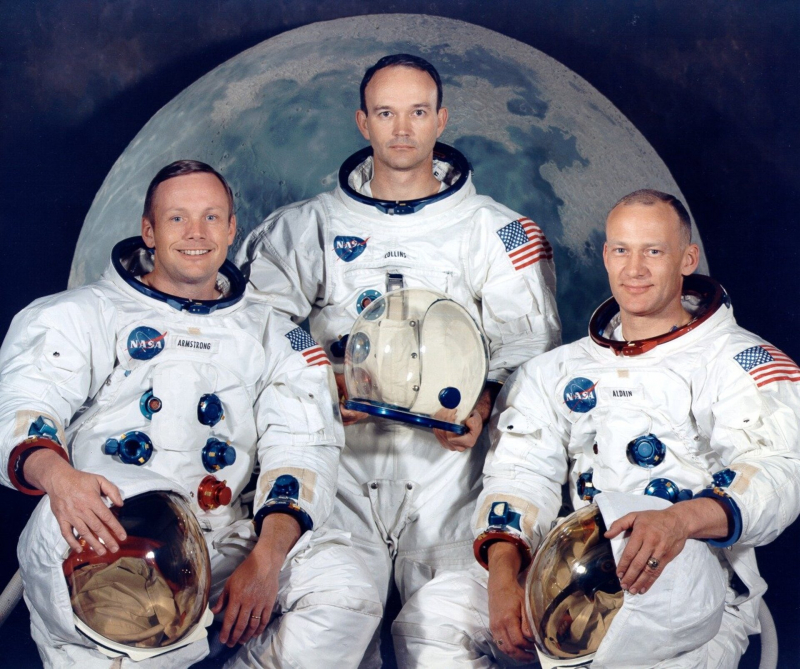
Source: ESA -
Buzz Aldrin’s mother, Marion, battled with depression up until her suicide in May 1968—a little more than a year before Apollo 11. Marion Aldrin’s father had also battled mental illness and committed suicide. Buzz believed he inherited depression from his family. In the early 1970s, Buzz did something relatively unheard of when he opened up about his mental health in an LA Times article. Around the same time, Aldrin began serving on the board of directors of the National Association for Mental Health (NAMH). He would eventually go on to become the national chairman of NAMH. At the time, he was traveling around the country, speaking about his experience with depression. However, Aldrin was also drinking heavily and had trouble fulfilling his obligations.
In August 1975, Buzz did a 28-day stay in an addiction treatment center and got involved with Alcoholics Anonymous, Biography reports. Unfortunately, the retired astronaut had a challenging time staying sober despite the support he received in AA.He was arrested for disorderly conduct after breaking in his girlfriend’s door while intoxicated. Having reached rock bottom, Buzz gave up alcohol for good in October 1978. Buzz Aldrin’s journey to free himself of feelings of hopelessness and despair was rocky, but with the support of the fellowship, he was able to overcome. In the years that followed, he helped others who had issues with alcohol find what he had found in recovery. He published two autobiographies, Return to Earth (1973) and Magnificent Desolation (2009), he shares at length about his clinical depression and alcohol use disorder in both memoirs.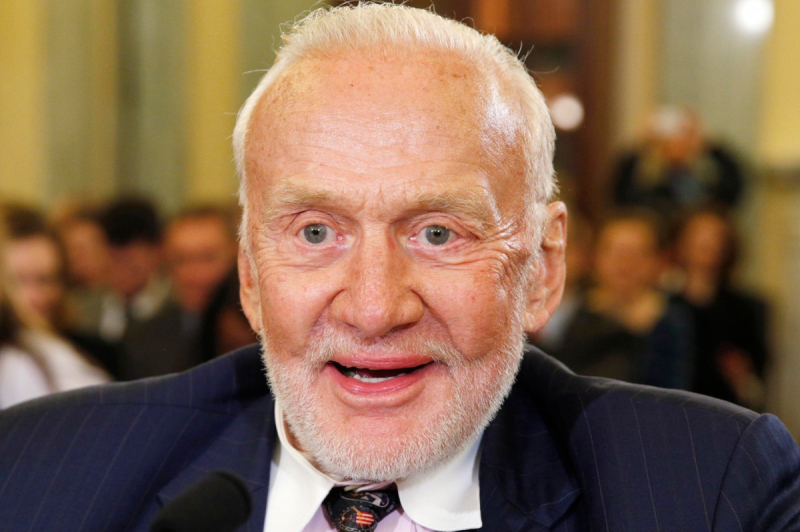
Source: Page Six 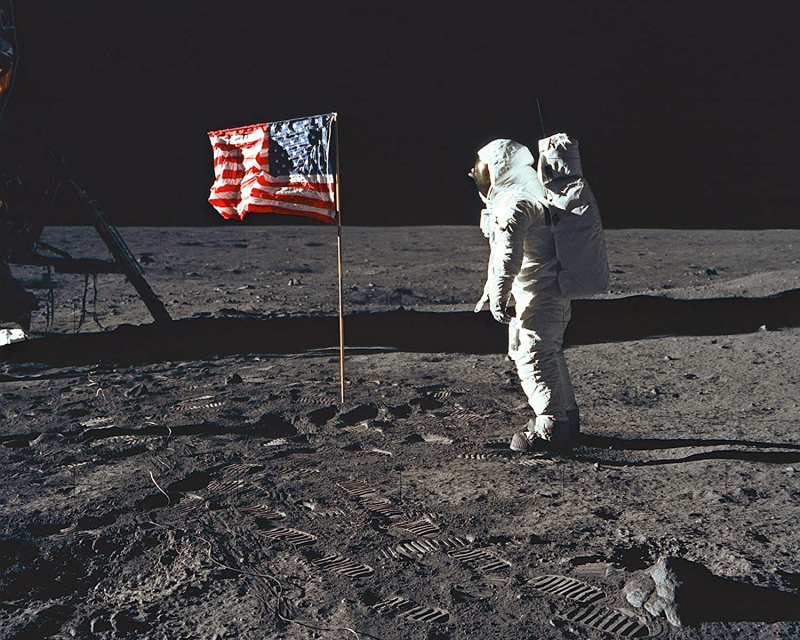
Source: takamura-dc.com -
Aldrin's father felt his son should continue on to multiengine flight school so that he could eventually take charge of his own flight crew, but Buzz wanted to become a fighter pilot. His father relented to his son's wishes, and after a summer of hitching around Europe on military planes, Buzz officially entered the United States Air Force in 1951. He again scored near the top of his class in flight school, and began fighter training later that year.
During his time in the military, Aldrin joined the 51st Fighter Wing, where he flew F-86 Sabre Jets in 66 combat missions in Korea. During the Korean war, F-86 planes fought to defend South Korea from the invasion of Communist forces in North Korea. Aldrin's wing was responsible for breaking the enemy "kills" record during combat, when they shot down 61 enemy MiGs and grounded 57 others in one month of combat. Aldrin shot down two MiGs, and was decorated with the Distinguished Flying Cross for his service during the war.
After a cease-fire was declared between North and South Korea in 1953, Aldrin returned home. He returned to school this time, at the Massachusetts Institute of Technology (MIT) where he planned to complete a master's degree and then apply for test pilot school. Instead, he earned a Ph.D. in aeronautics and astronautics, graduating in 1963. His thesis subject "Line-of-sight guidance techniques for manned orbital rendezvous" was the study of bringing piloted spacecraft into close proximity with each other.
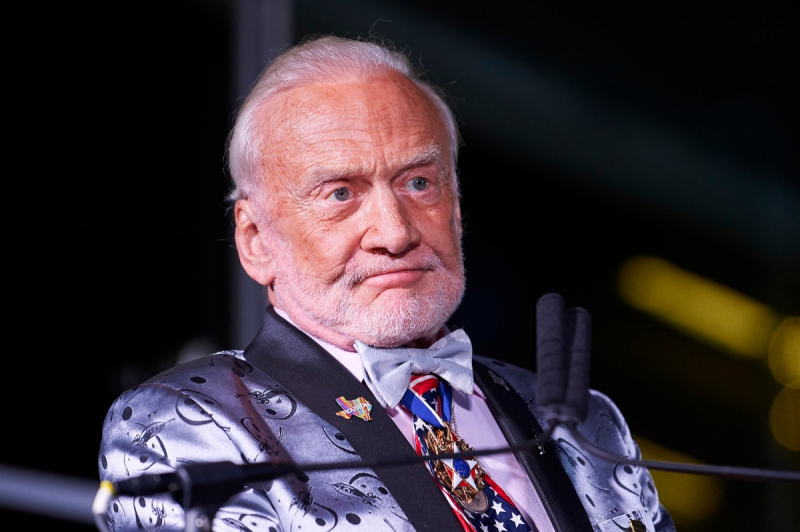
Source: New York Post 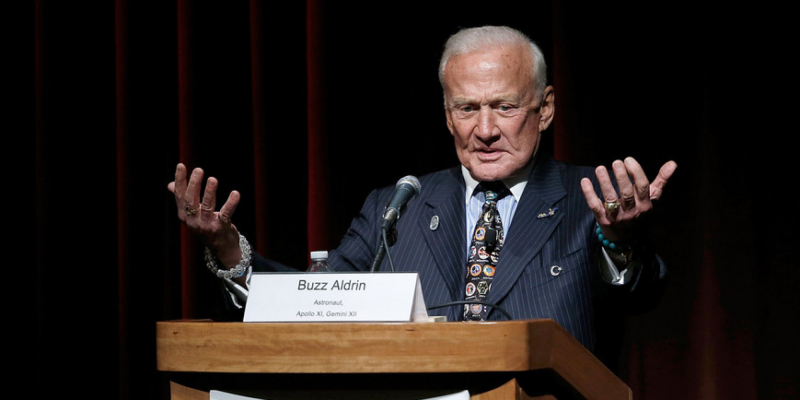
Source: HuffPost -
Aldrin has received three patents from the USPTO: one in 1993 for a home-designed space station facility that could house eight to ten astronauts; one each in 2003 and 2004 for "flyback boosters with removable rocket propulsion modules" and "multi-crew modules for space flight." Multi-crew spacecraft modules: A launch vehicle is part of an orbital human space launch system. Different crew modules are installed separately in respect to the launch vehicle. Around the launch vehicle's perimeter, the several crew modules are nestled. In addition or alternatively, there are numerous independent crew modules arranged in a pod that is roughly oriented along the length of the launch vehicle. The numerous crew modules are launched using a single rocket. From orbit, each crew module makes a separate trip back to Earth.
With a detachable rocket propulsion module, a flyback booster Several space launch vehicles using variations of the flyback booster (200), which consists of an aircraft (203) housing a launch vehicle stage as a detachable rocket propulsion module (502) are described. A multistage space launch vehicle's first stage is this flyback booster (number 200). To reduce the cost of launch for a particular payload, the stage employed in the flyback booster (200) and the upper stages of the multistage space launch vehicle (213) are chosen.
A space station facility is one that has numerous elongated pieces that come together to form a cuboctahedral-shaped structure that is centered around a pressurized command module. The space station facility may be utilized independently of another space station or in orbit as a space station. Eight tetrahedral-shaped modules or berthing spaces and six pyramidal-shaped modules or berthing spaces are created using the elongated components, which are all of equal length. The fourteen berthing spaces allow access to berthing ports on the central command module. The elongated members may include hinges at their midpoints to make it easier to transport them in a space shuttle's cargo bay and to deploy them in space during the construction of the space station facility.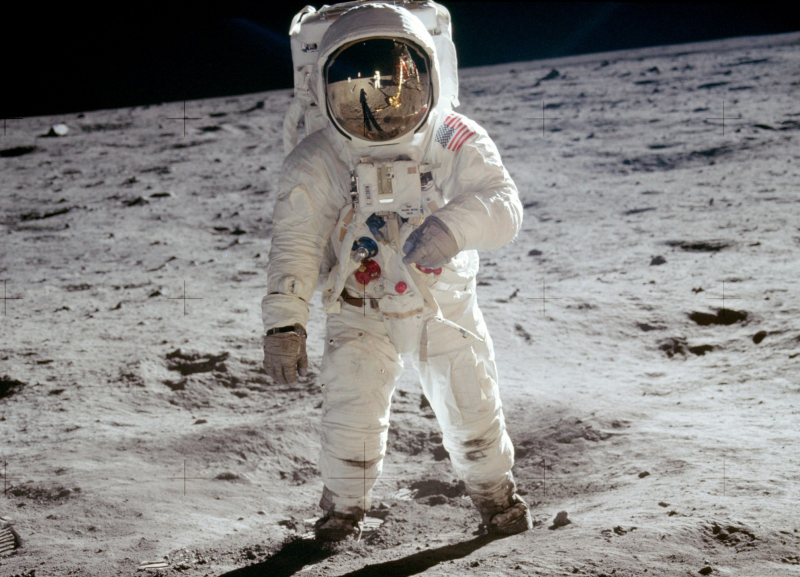
Source: CNET 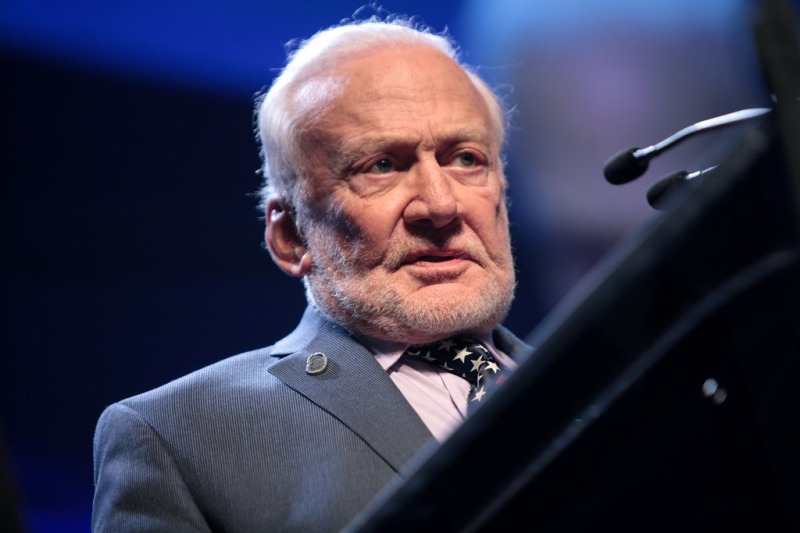
Source: Flickr -
Aldrin is the oldest person to have traveled to both the North and South Poles, according to Guinness World Records. He visited the North Pole in July 1998 on board the nuclear icebreaker Sovetskiy Soyuz, and at the age of 86 years and 314 days, he made a tourist trip to the South Pole in November 2016. Crediting someone as the "first" to complete any form of achievement would be futile because records are supposed to be broken. However, Guinness World Records occasionally makes an exception for the most admirable, most recognizable, and groundbreaking accomplishments, singling these "firsts" out as indestructible and eternal. Without a doubt, landing on the Moon checks each of those boxes.
Unfortunately, Aldrin had to be medically evacuated from the Scott-Amundsen South Pole Station to Christchurch, New Zealand, after becoming ill with altitude sickness. Aldrin said in a statement that he felt much better when he reached sea level. Incidentally, the explorer has also been far beneath sea level: in 1996, he ventured to the wreck of the Titanic.
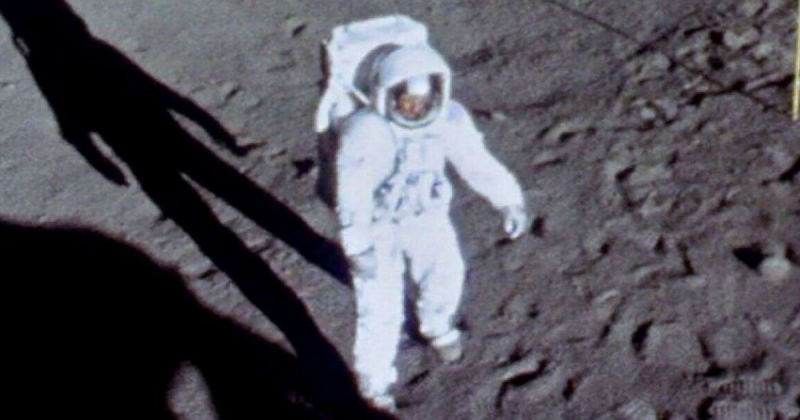
Source: The Vintage News 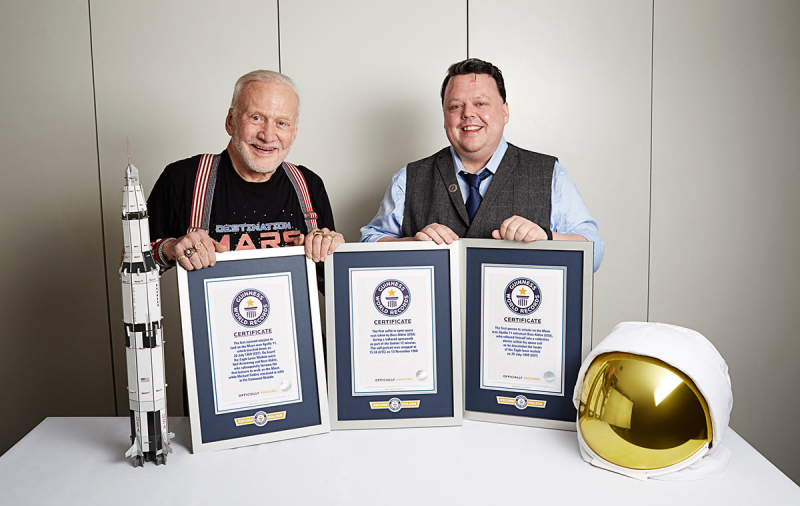
Source: Guinness World Records






























